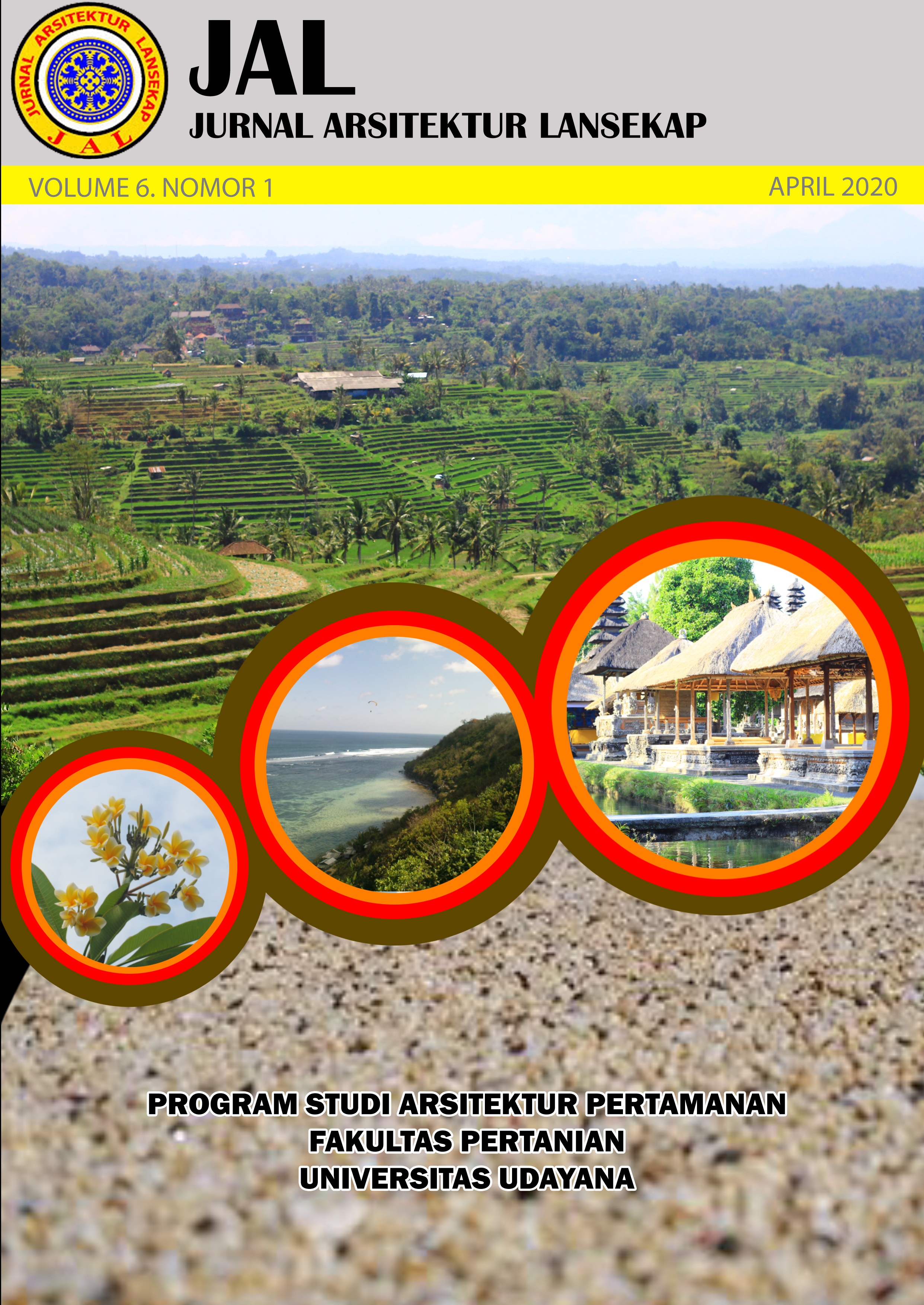Struktur sosial dan tatanan spasial permukiman Desa Adat Penglipuran, Kecamatan Kubu, Kabupaten Bangli, Provinsi Bali
Abstract
The research method was carried out using in-depth qualitative descriptive observation method. The results of the research show that Penglipuran Traditional Village is a village that had a very high social system ranging from development, environment, culture to the formation of awig-awig which is formulated together with the community and for the benefit of the community it self. The Penglipuran Indigenous Village community has very strong socio-cultural values, so that the socio-cultural values ??in the community are able to form a very unique spatial pattern of village spaces. The social values ??that make up the spatial pattern of the Penglipuran Traditional Village spaces are inseparable from the influence of elements of the belief system, respect for the older, history, ecotomy, cultural activities, and awig-awig as a binding non-formal legal basis. The pattern of the Penglipuran Traditional Village space was formed due to the strong influence of Hindu values ??which was implemented with the development of space with the concept of sanga mandala. Changing the function of space and increasing new spaces are formed due to the increase in family members and the needs of families or members of the Penglipuran Traditional Village community. The kinship between neighbors with close family values ??in the Penglipuran Traditional Village is manifested in the existence of access within the yard which connects between them. The economic level of the Penglipuran Traditional Village community is influenced by non-agrarian income and the entry of tourism, resulting in a shift in the function of space and building ornaments.
Downloads
References
Brown, R. 1940. On Social Structure. The Journal of the royal anthropological institute of great Britain and Ireland. 70(1):1-12.
Fray.2013. Arsitektur Tradisional Bali. http://www.scribd.com/doc/25389132/Arsitektur-Tradisional-Bali diakses tanggal 2 Februari 2018 jam 20.00 wita
Gelebet, I nyoman dkk. 1986. Arsitektur Tradisional Daerah Bali. Denpasar. Departemen Pendidikan dan Kebudayaan Proyek Inventarisasi dan Dokumentasi Kebudayaan Daerah.
Hendropuspito 1989. “Sosiologi Sistematik” mendefinisikan bahwa struktur sosial adalah skema penempatan nilai-nilai sosiobudaya dan organ-organ masyarakat pada posisi yang dianggap sesuai dengan berfungsinya organisme masyarakat sebagai suatu keseluruhan dan demi kepentingan masing- masin”. Jakarta.
Ngoerah, I G.N.G. 1981. “Laporan Penelitian Inventarisasi Pola-Pola Dasar Arsitektur Traditional Bali. Ujung Pandang: Dirjen Pembinaan dan P3M Dirjen Dikti, Depdikbud”, Lembaga Penerbitan Universitas Hasanuddin.
Pritchard, E. 1951. “Social Anthropology”. University of California Libraries. London.
Sugiyono. 2010. “Metode Penelitian Pendidikan Pendekatan Kuantitatif, Kualitatif, dan R&D”. Bandung:Alfabeta.
Sulistyawati, dkk. 1985. “Preservasi Lingkungan Perumahan Pedesaan dan Rumah Tradisional Bali di Desa Bantas, Kabupaten Tabanan”. Denpasar: P3M Universitas Udayana.
Winarta dan Dharmadiatmika. 2018. Ruang Aktivitas Perempuan dalam Arsitektur Vernakular Gunungsari, Tabanan Bali. JAL: Jurnal Arsitektur Lanskap. 4(1):111-119

This work is licensed under a Creative Commons Attribution-ShareAlike 4.0 International License.
An author who publishes in the Jurnal Arsitektur Lansekap (JAL) agrees to the following terms:
- Author retains the copyright and grants the journal the right of first publication of the work simultaneously licensed under the Creative Commons Attribution-ShareAlike 4.0 License that allows others to share the work with an acknowledgement of the work's authorship and initial publication in this journal
- Author is able to enter into separate, additional contractual arrangements for the non-exclusive distribution of the journal's published version of the work (e.g., post it to an institutional repository or publish it in a book) with the acknowledgement of its initial publication in this journal.
- Author is permitted and encouraged to post his/her work online (e.g., in institutional repositories or on their website) prior to and during the submission process, as it can lead to productive exchanges, as well as earlier and greater citation of the published work (See The Effect of Open Access).
Read more about the Creative Commons Attribution-ShareAlike 4.0 Licence here: https://creativecommons.org/licenses/by-sa/4.0/.







